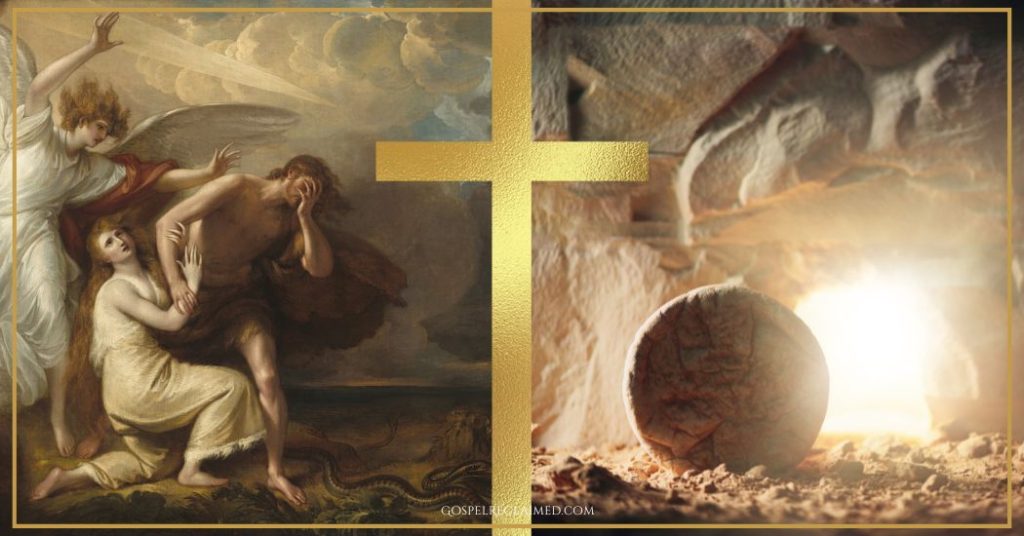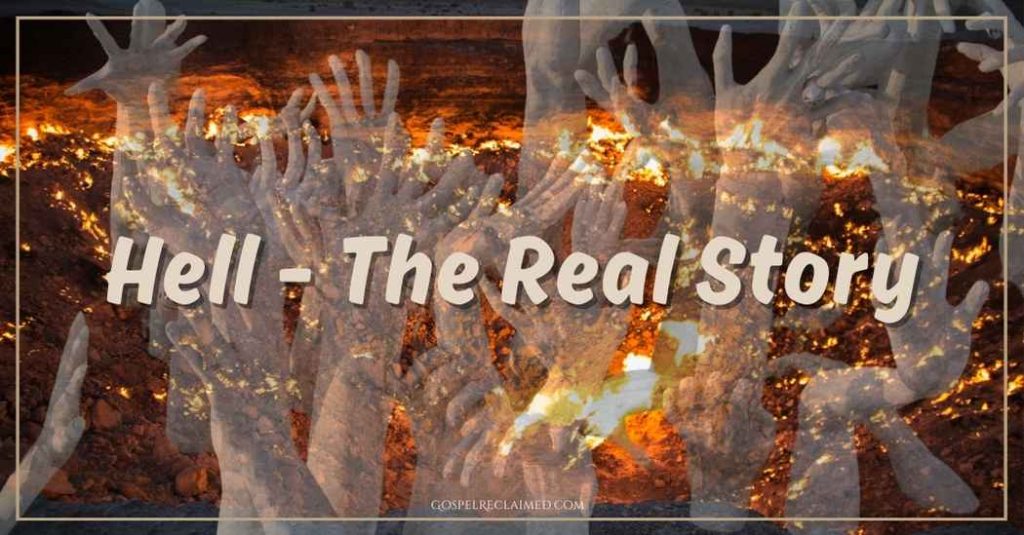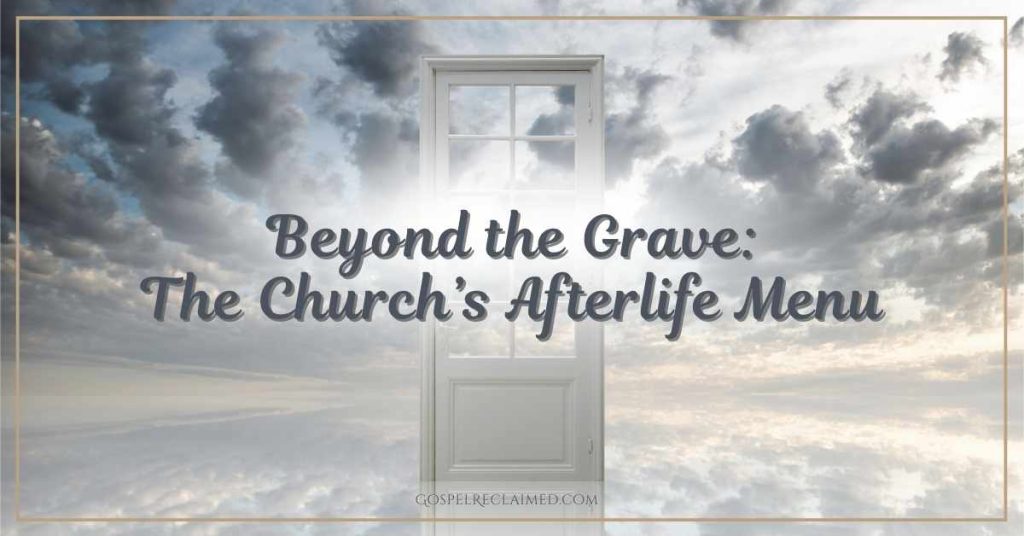⚠️ I don’t write as one who has arrived at the truth but as one still on the road. Gospel Reclaimed is where I share my journey of discovering God and myself in Him. Each post reflects my current understanding, knowing that tomorrow may bring deeper light and fresh insight.
The Last Adam: A Title That Whispers of Endings
What if the story of humanity isn’t a endless cycle of fall and fragile repair, but a tale with a decisive close? Paul doesn’t call Jesus the “Second Adam”—a mere sequel or fix. He names Him the Last Adam, a title that hums with finality, like the turning of the final page.
Why “last”? It hints at something audacious: that the human drama begun in a garden finds its conclusion not in despair, but in a tomb rolled open.
Scripture invites us to trace this thread by holding two figures in tension, both called sons of God:
- “…Adam, the son of God.” — Luke 3:38
- “[Jesus]… the Son of God.” — Luke 1:35
The first, formed from earth’s dust, receives the divine breath and steps into a world of untamed possibility. The last, conceived by the Spirit, enters our fractured timeline with eyes fixed on an unseen horizon. One turns inward, grasping at shadows; the other pours out life, drawing all things into light.
Paul frames this contrast as history’s hinge: “For as in Adam all die, so also in Christ shall all be made alive” (1 Corinthians 15:22).
But how? What does it mean for the Last Adam to step into Adam’s footsteps—not to repeat the tragedy, but to rewrite the ending? This mystery pulls us forward: the unraveling of death, the quiet dawn of something incorruptibly new.
The First Adam: The Shadow of the Fall
In the beginning, Adam stands not as one man among many, but as humanity’s blueprint—the first to bear God’s image, shaped from dust yet quickened by the breath of eternity:
“Then the LORD God formed man of dust from the ground and breathed into his nostrils the breath of life, and man became a living being” (Genesis 2:7).
This breath was no mere spark; it was divine intimacy woven into flesh, a promise of unbroken communion. Yet in a moment of inward turn, Adam reaches for forbidden fruit, and the fracture begins.
Disobedience ripples outward, not as isolated guilt, but as a shared inheritance:
“Through one man sin entered the world, and death through sin, and so death spread to all men, because all sinned” (Romans 5:12).
Paul captures the scope—“For as by one man’s disobedience the many were made sinners” (Romans 5:19)—and its echo: “by the transgression of the one the many died” (1 Corinthians 15:22).
The early fathers saw this not as a personal failing alone, but as the birth of an entire epoch shadowed by decay.
Irenaeus mourned how Adam’s choice accustomed humanity to death, stripping away immortality’s garment (Against Heresies, V.23.2). Athanasius traced the trajectory: from non-existence to being, now veering back toward oblivion through corruption’s pull (On the Incarnation, 5).
Adam’s legacy etches itself deep:
- Disobedience, twisting freedom into chains of self-will.
- Mortality, a hush over every breath, dust claiming its due.
- Alienation, a veil between creature and Creator, making the divine seem a distant echo.
To be “in Adam” is to inherit this haze—a world where life feels provisional, shadowed by endings. The prototype has faltered, and with him, the whole line bends toward dust. But prototypes exist to be fulfilled… or perhaps, eclipsed. What if the story’s arc demands not a sequel, but a last word?
Discover the freedom of your finished co-crucifixion in this article: Galatians 2:20 — The Declassified Reality of the Crucifixion

The Last Adam: A New Humanity Remade
Here the mystery sharpens: Jesus is not a “second” Adam, restarting the tale. As the Last, He signals the end of Adam’s line—the disobedience, corruption, and death that once scripted our shared fate. No more are we inescapably “born into Adam’s curse,” for His story closes in Christ’s decisive act.
Through cross and empty tomb, the Last Adam enacts a dual miracle:
1. Undoing the Old: He enters the fray of sinful flesh to condemn sin itself, dismantling death’s dominion: “God, sending His own Son in the likeness of sinful flesh and for sin, condemned sin in the flesh” (Romans 8:3). Our old self is crucified with Him: “Our old man was crucified with Him, that the body of sin might be destroyed” (Romans 6:6).
2. Remaking the New: He rises as the “beginning, the firstborn from the dead” (Colossians 1:18), head of a humanity no longer yoked to decay but hidden in incorruptible life: “You have died, and your life is hidden with Christ in God” (Colossians 3:3).
The fathers called this recapitulation—Christ replaying Adam’s drama, succeeding in every faltered scene. Irenaeus marveled: “The Lord, coming to His own creation, bore death, that He might destroy death and bring man to life” (Against Heresies, V.21.1). Athanasius saw the incarnation as death’s targeted end: The Word assumes flesh to offer it freely, abolishing the ancient tyrant (On the Incarnation, 8).
“The first man, Adam, became a living soul. The last Adam became a life-giving spirit.” — 1 Corinthians 15:45
This is no mere patch; it’s cosmic reversal. Where Adam’s dust returned to dust, the Last Adam transforms it to glory.
“He has abolished death and brought life and immortality to light through the gospel” (2 Timothy 1:10).
We who bore the earthly image now awaken to the heavenly: a remade race, where obedience flows from union, and life pulses eternal.
The Cross: Where Adam’s End Meets Christ’s Beginning
Eternity doesn’t wait for history to catch up—it intersects it at the Cross, that timeless nexus where Adam’s unraveling threads are gathered and rewoven.
Here, “the fullness of time” arrives (Galatians 4:4), as the Lamb “slain from the foundation of the world” (Revelation 13:8) draws all things into one: “In the dispensation of the fullness of the times, He might gather together in one all things in Christ” (Ephesians 1:10).
The old humanity, rooted in dust, meets its end in His broken body.
The new, born of heaven, stirs in the resurrection’s dawn.
As John Crowder evokes, “the cosmos births from virgin womb and rebirths from virgin tomb.”

Gregory of Nyssa glimpsed the sweep: “Since the common lot of humanity had been condemned in Adam, in Christ the whole mass of human nature should be sanctified” (The Great Catechism, 32).
Predestined from the beginning (Ephesians 1:4–5), we shift images: from man of dust to man of heaven (1 Corinthians 15:49).
The fall was the stage; the Cross, the curtain’s fall and rise.
Want to go deeper into what it means to share in Christ’s death and resurrection?
Read next: Who Is In Christ? Unpacking Romans 6:5–11 to Discover Who Shares in Christ’s Death, Resurrection, and Victory
Awakening to the Empty Tomb
The line of Adam has closed, the new humanity unveiled in Christ—yet here we are, breathing the dust-choked air of this shadowed age. Bodies that ache, temptations that whisper, graves that still yawn. Why the delay?
Perhaps, as in a half-remembered dream, every soul must taste the bitter fruit of separation’s illusion—the knowledge of good and evil that Adam bit into, teaching us the ache of seeming exile so we might cherish the return.
We enter this world as sleepwalkers, heirs to the echo of a curse already shattered. The stone rolls at our birth because it rolled before time’s first tick: sin’s sting dulled, death’s victory stolen.
“Because I live, you will live also” (John 14:19). Yet the dream persists, a collective haze of fear and fracture, where we mistake the nightmare for our truest self.
The gospel doesn’t shatter the dream with force; it whispers awake. We don’t strive to become the new creation—we awaken to being it, already hidden in the Last Adam’s life.
Faith is this gentle rousing: eyes opening to the empty tomb within, where the illusion of apartness dissolves.
“When Christ, who is your life, appears, then you also will appear with Him in glory” (Colossians 3:4).
Even now, in perishable skin, His incorruptible pulse beats—undone death stirring us to live from union, not toward it.
All—awake or dreaming, seen or unseen—abide together with Him (1 Thessalonians 5:10).
The Last Adam’s remaking isn’t a future prize; it’s the ground we stand on, the air we breathe, if only we remember. What began in dust whispers its close in glory, inviting us to live the ending that’s already written.
For a luminous dive into time’s unraveling and our genesis in Christ, turn to Peter Hiett’s The History of Time and The Genesis of You.
➤ Next: Can Sin Really Separate Us from God? — Undoing the Lie of Separation and Remembering We’ve Always Belonged
FAQs
Why does Paul call Jesus the “Last Adam” instead of the “Second Adam”?
Paul doesn’t call Jesus the “Second Adam”—a mere sequel or fix. He names Him the Last Adam, a title that hums with finality, like the turning of the final page. Why “last”? It hints at something audacious: that the human drama begun in a garden finds its conclusion not in despair, but in a tomb rolled open.
What does it mean to be “in Adam”?
To be “in Adam” is to inherit this haze—a world where life feels provisional, shadowed by endings. The prototype has faltered, and with him, the whole line bends toward dust.
Why do we still experience suffering, temptation, and death if Adam’s line has ended?
Perhaps, as in a half-remembered dream, every soul must taste the bitter fruit of separation’s illusion—the knowledge of good and evil that Adam bit into, teaching us the ache of seeming exile so we might cherish the return.





